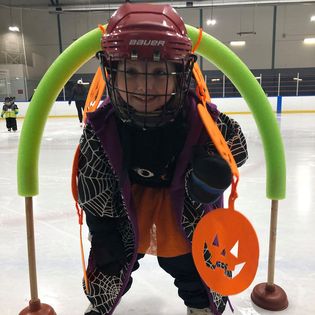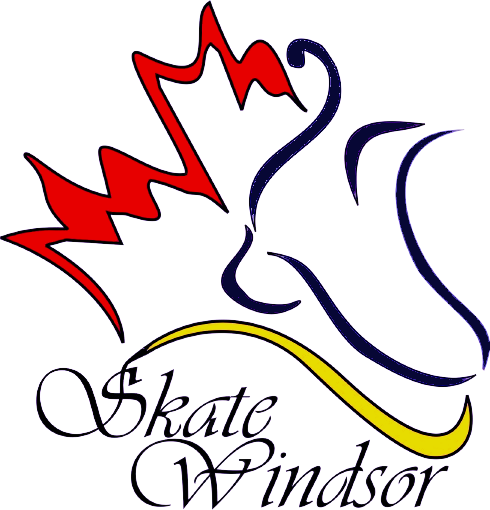Helmet Policy
Our Helmet Policy
Skate Canada is proud of its CanSkate program, the best learn-to-skate program in Canada, and we will continue to develop policies and programming that create a better and safer learn-to-skate experience for our skaters. If you would like more information on helmet use and injury prevention we recommend you visit Parachute Canada below.
Coaches, clubs or skating school should not dictate that a skater should not wear a helmet.
- Skaters working on STAGE 5 and below, as well as all skaters in the PowerSkate program, MUST wear CSA approved hockey helmets.
- Skaters working on STAGE 6 or higher may choose to continue to wear a helmet at their discretion. The skater, parent/guardian have the final say as to whether or not the skater will or will not wear a helmet.
- Coaches are in charge of ensuring what a skater wears on the ice is safe. This applies to clothing, hair, skates etc.

How should the hockey helmet fit?
- A hockey helmet should fit snug to prevent any shifting and maximize protection. Make sure the chinstrap can be adjusted so it gently makes contact under the chin when fastened.
- For an adjustable helmet, open it to the largest setting and gradually begin to downsize the helmet until a comfortably snug fit is achieved. The helmet should rest on the head so that the rim is one finger width above the eyebrow and making contact with the top of your head.
- Although most helmets are lined with protective foam, some helmets will feel better than others. Try on different brands of helmets for fit and comfort.
- All CSA certified helmets have a sticker indicating their certification.
Are used hockey helmets acceptable?
- Hockey helmets and face protectors sold in Canada must meet safety standards set by the Canadian Standards Association (CSA). If the CSA sticker is not present, throw the product away. Hockey helmets must have labelling with the date of manufacture and have a chin strap. CSA takes the position that the life span of a helmet is not easy to determine and so CSA does not give expiry dates for hockey helmets. CSA advocates that “consumers should exercise good judgement as to the suitability of a hockey helmet for play. Helmets that are cracked, have loose fitting or missing liner pieces, or that have been subjected to a severe blow should be replaced. For a hockey helmet to function effectively, it must be in very good working order and worn properly in accordance with the manufacturer’s instructions.”
Why hockey helmets & are face masks required?
- Hockey helmets are designed to help protect against head injuries occurring on ice, whether from a fall or collision. A bicycle helmet, for example, is designed to protect against head injuries should a fall occur while riding a bicycle. It is important to ensure that when a skater is on the ice, they are protected with equipment designed for their sport or activity.
- Face masks are not mandatory; however young skaters may benefit from the added protection.
Can a parent sign a waiver absolving the club from any liability and allow their child to participate without a helmet?
- No. The requirement to wear a helmet is a Skate Canada Policy and all clubs and members must abide by our policies. Therefore, in order to participate in the CanSkate program all skaters who have not achieved Stage 5 in the CanSkate program or who lack good balance and control must wear a CSA approved hockey helmet while on the ice.
Why has up to and including Stage 5 been selected as the benchmark for helmet use?
- Skaters who lack good control/balance when skating forward, backward and have difficulty stopping, as well as maneuvering around obstacles on the ice are at a higher risk of being unable to control a fall, regardless of their age.
- The CanSkate program has been developed to introduce basic skating skills to beginners in a safe and sequential manner. The learning progressions leading to and included in Stage 5 allow skaters to gain the necessary skills (balance, agility, and control) required to safely participate on the ice. While it may be likely that many Stage 5 skaters can skate reasonably well, ice surfaces can be very unpredictable and there is always a risk of falling, no matter what stage a skater is at. CanSkaters participate in a group environment with other skaters on the ice of different levels who may fall and cause other skaters to fall.
